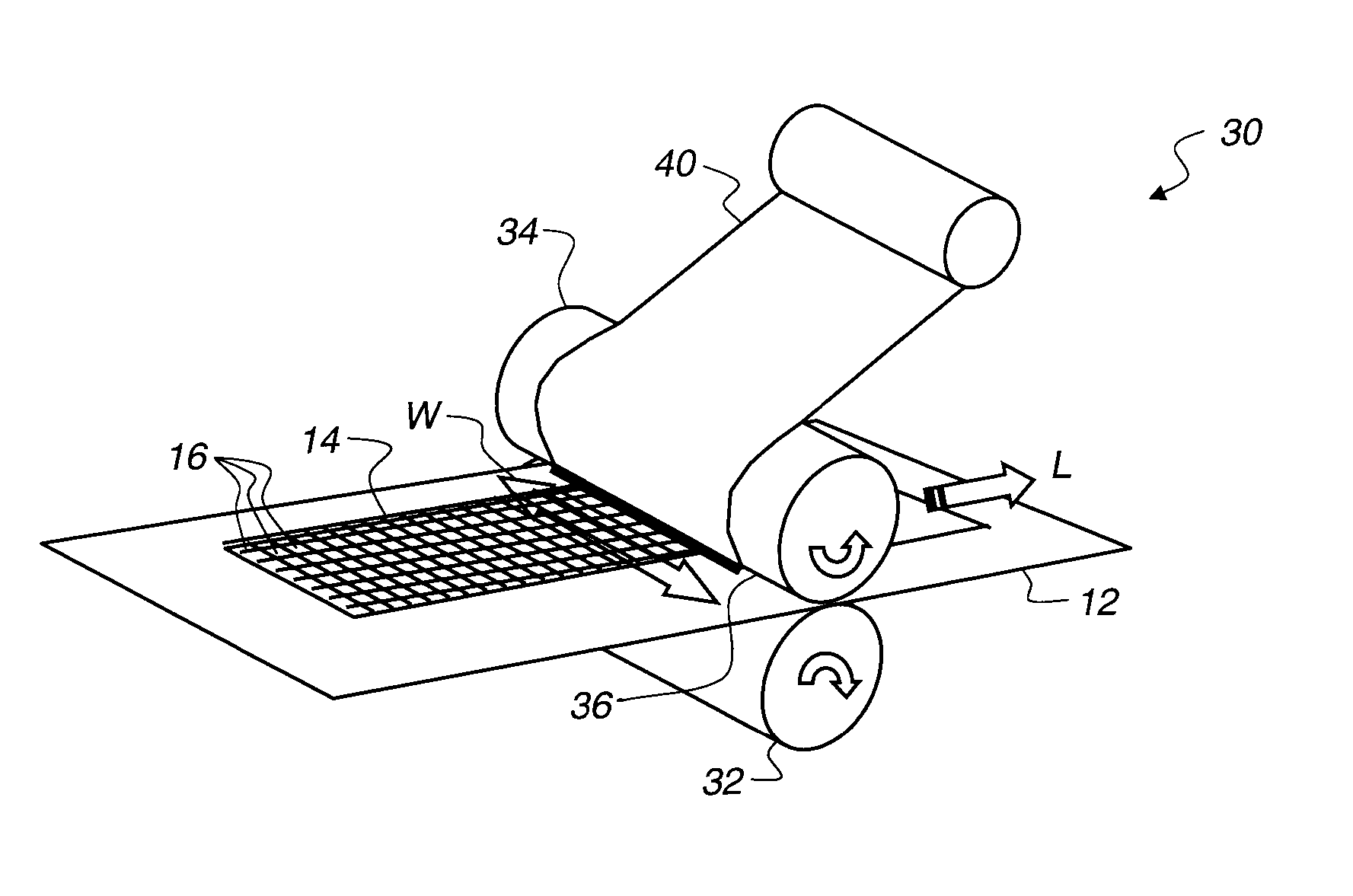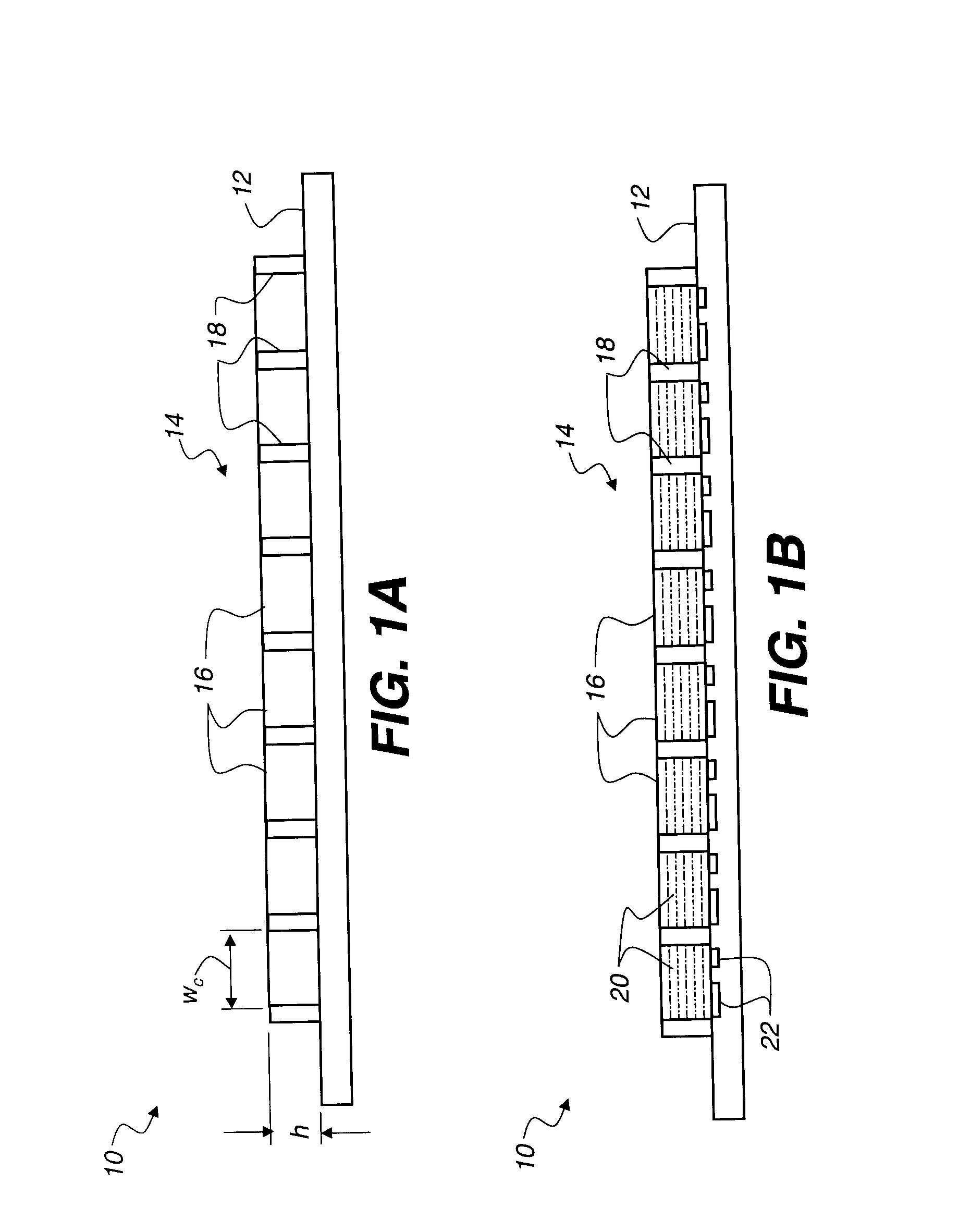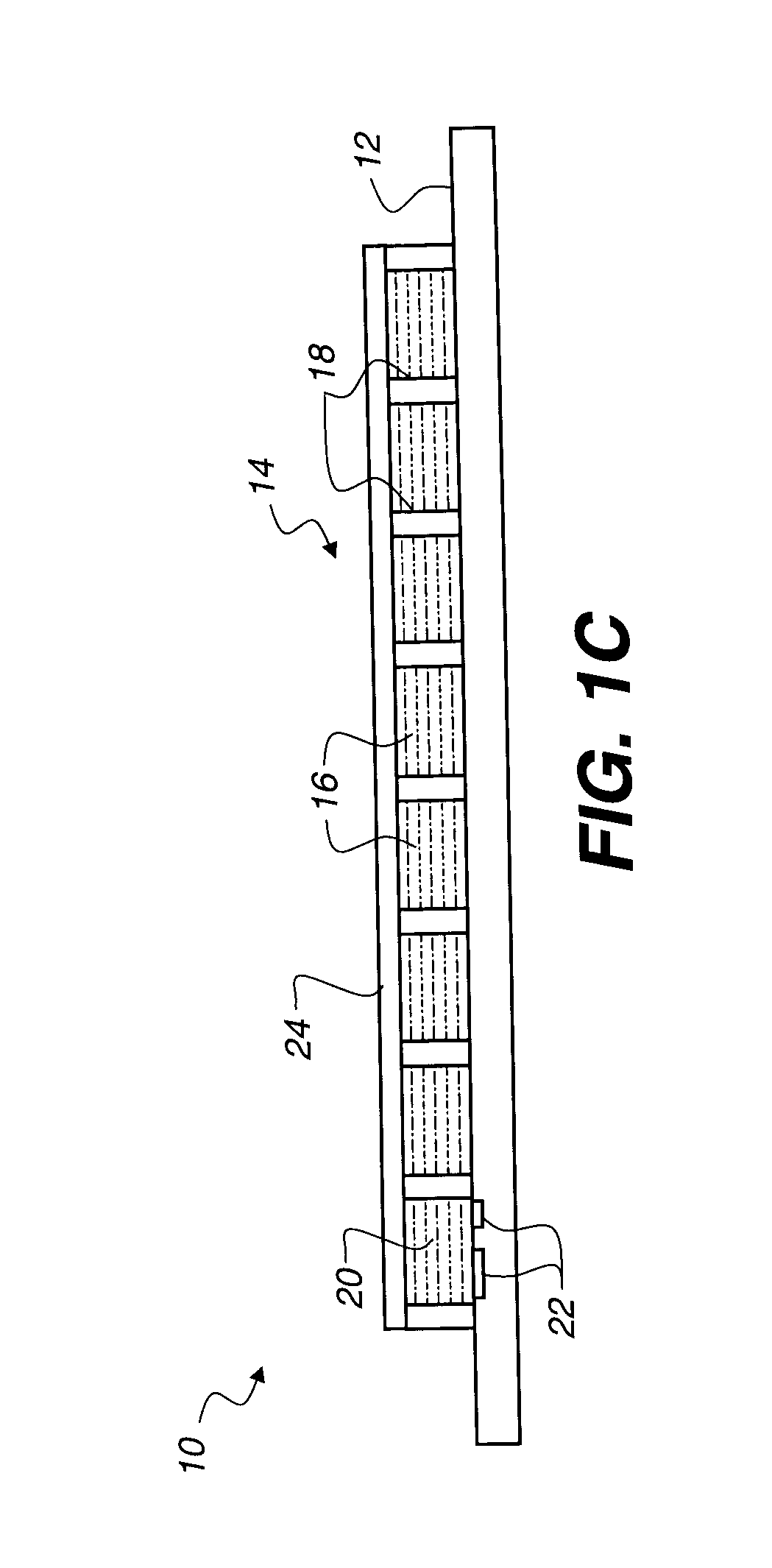Electro-optical modulating display and method of making the same
a technology of optical modulation and display, applied in the direction of non-linear optics, static indicating devices, instruments, etc., can solve the problems of difficult to adjust the thickness of the seal, difficulty in preventing or minimizing the degree of intermixing between the sealing, and difficulty in forming partitions
- Summary
- Abstract
- Description
- Claims
- Application Information
AI Technical Summary
Benefits of technology
Problems solved by technology
Method used
Image
Examples
Embodiment Construction
[0058] As indicated above, the present invention is directed to a method of manufacturing an array of microcells. In one embodiment, the present invention relates to a method of making a display device comprising a substrate or support, a patterned conductor, and an electro-optical imaging fluid. The electro-optical imaging fluid used in the present invention is a light modulated liquid fluid, and can be reflective or transmissive. Such light modulating fluid materials can be electrochemical, electrophoretic, or electrochromic, or may comprise particles such as GYRICON particles or liquid crystals. The preferred light-modulating fluid for an imaging layer comprises an electrophoretic material.
[0059] For the imaging device made by the present invention, a preferably flexible support substrate bears an electrically modulated imaging layer over at least one surface. As used herein, the terms “over,”“above,”“on,”“under,” and the like, with respect to layers in the display element, refe...
PUM
 Login to View More
Login to View More Abstract
Description
Claims
Application Information
 Login to View More
Login to View More - R&D
- Intellectual Property
- Life Sciences
- Materials
- Tech Scout
- Unparalleled Data Quality
- Higher Quality Content
- 60% Fewer Hallucinations
Browse by: Latest US Patents, China's latest patents, Technical Efficacy Thesaurus, Application Domain, Technology Topic, Popular Technical Reports.
© 2025 PatSnap. All rights reserved.Legal|Privacy policy|Modern Slavery Act Transparency Statement|Sitemap|About US| Contact US: help@patsnap.com



